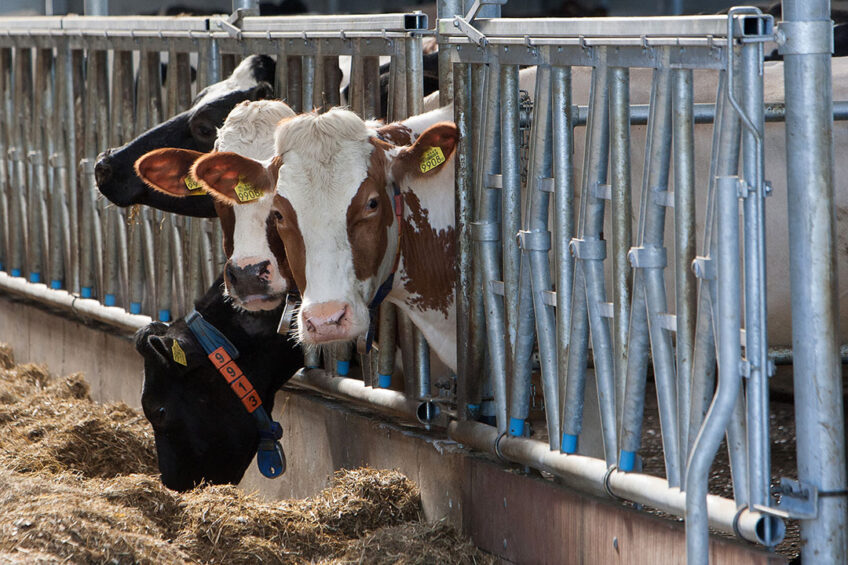Impact on GHG emissions when removing dairy cows

Often the suggested solution to combat greenhouse gas emissions has been to reduce or eliminate this industry in favour of plant production. But what is the actual impact on the environment? And what will the removal of dairy cows mean in terms of emissions?
A team of Virginia Tech researchers wanted to uncover the actual impact that these cows have on the environment, according to a recent press release.
In a study the researchers found that the removal of dairy cows from the United States agricultural industry would only reduce greenhouse emissions by about 0.7% while significantly lowering the available supply of essential nutrients for humans.

Minimal impact
“There are environmental impacts associated with the production of food, period. The dairy industry does have an environmental impact, but if you look at it in the context of the entire US enterprise, it’s fairly minimal,” said Robin White, an associate professor in the Department of Animal and Poultry Sciences and a member of the research team. “Associated with that minimal impact is a very substantial provision of high quality, digestible, and well-balanced nutrients for human consumption.”
White was part of a team that included scientists from the US Dairy Forage Research Center, part of the US Department of Agriculture, and supported Dairy Management Inc. that examined a few different scenarios for dairy cattle in the United States that factored in current management practices, retirement, and depopulation from the United States agricultural industry.
White’s team looked at both the environmental and nutritional impact of 3 different scenarios:
![]() Greenhouse gas emissions were unchanged in the herd management scenario, in which cattle become an export-only industry and the supply of available nutrients decrease. In this economically realistic scenario, the industry stays similar to how it is now, but the United States no longer benefits from the human consumable nutrients that dairy cows provide.
Greenhouse gas emissions were unchanged in the herd management scenario, in which cattle become an export-only industry and the supply of available nutrients decrease. In this economically realistic scenario, the industry stays similar to how it is now, but the United States no longer benefits from the human consumable nutrients that dairy cows provide.
![]() The scenario where cows were retired – where cows lived out the remainder of their lives in pastures or free-range – resulted in a 12% reduction in agricultural emissions and all 39 nutrients considered declined.
The scenario where cows were retired – where cows lived out the remainder of their lives in pastures or free-range – resulted in a 12% reduction in agricultural emissions and all 39 nutrients considered declined.
![]() The depopulation scenario – where cows are killed off – resulted in a 7% reduction in agricultural emissions. Thirty of 39 nutrients increased for the depopulation scenario, though several essential nutrients declined.
The depopulation scenario – where cows are killed off – resulted in a 7% reduction in agricultural emissions. Thirty of 39 nutrients increased for the depopulation scenario, though several essential nutrients declined.
A major factor in all of the scenarios is the use of the land that has to be managed after the removal of the cows. The impact on the industry downstream must be factored into the scenario results. For example, a pasture that was formerly used for cattle would no longer be used for that resource. Areas used for grain, fertiliser, and more would also change functionality.
A significant reason why the impact of dairy cows on the environment is minimal is because of advancements in the industry over the last 50-plus years, White said.
“Land use was a focus in all animal removal scenarios because the assumptions surrounding how to use land made available if we remove dairy cattle greatly influence results of the simulations,” White said. “If dairy cattle are no longer present in US agriculture, we must consider downstream effects, such as handling of pasture and grain land previously used for producing dairy feed, disposition of byproduct feeds, and sourcing fertiliser.”
Plants have long been thought of as a more renewable method to obtain nutrients essential for humans, but that requires farming of the land, which also produces emissions.
A significant reason why the impact of dairy cows on the environment is minimal is because of advancements in the industry over the last 50-plus years, White said. As with most industries, efficiency improves over time. To produce the same 1 billion kilogrammes of milk in 2007 as in 1944, it required just 21% of the animals, 23% of the foodstuffs, 35% of the water, and only 10% of the land, according to the report.
The dairy industry in the US contributes approximately 1.58% of the country’s total greenhouse gas emissions.
Source and for more info: Virginia Tech Daily
Join 13,000+ subscribers
Subscribe to our newsletter to stay updated about all the need-to-know content in the dairy sector, two times a week.










